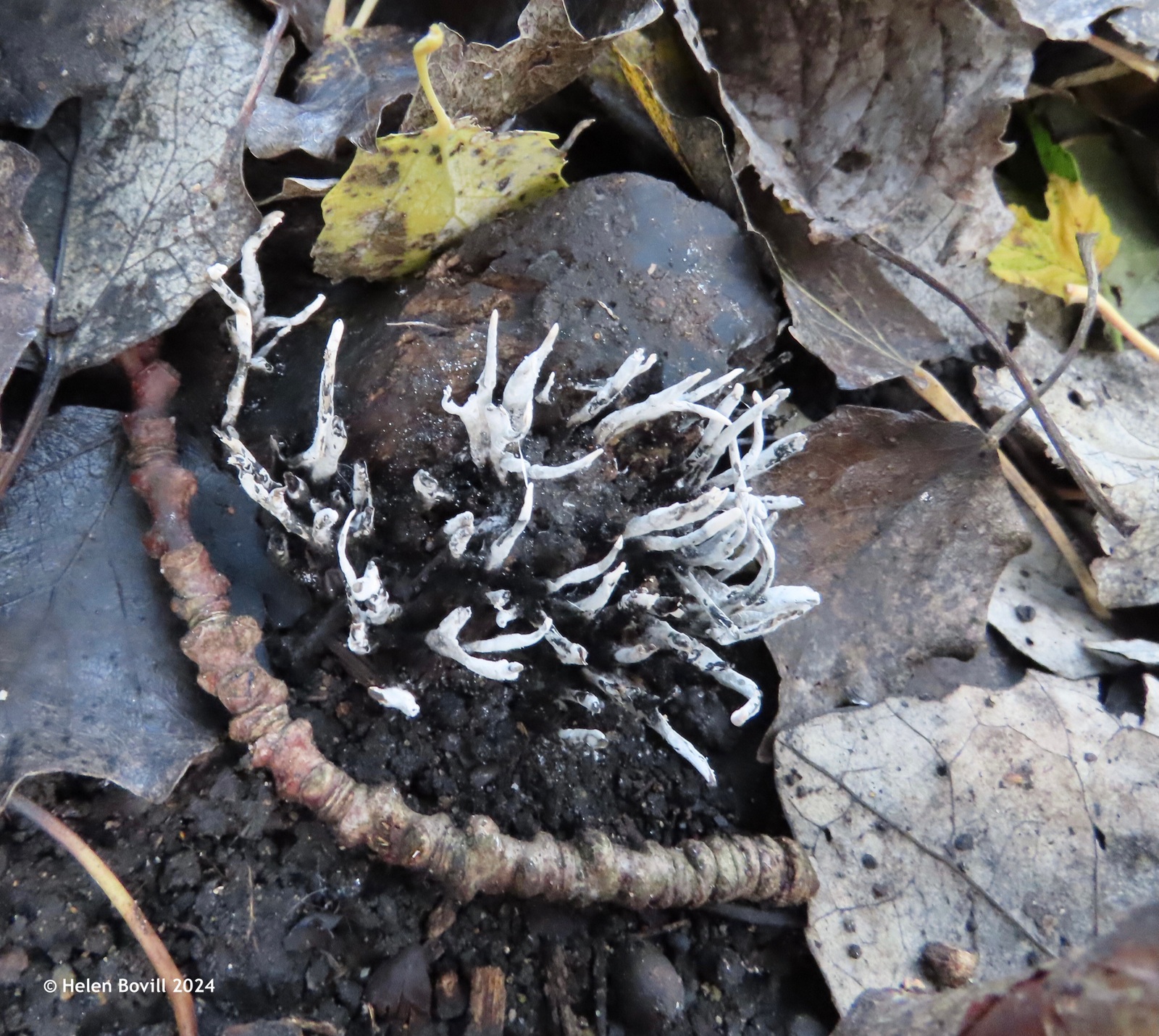By Helen Bovill, volunteer, 30 November 2024
Weather-wise, November had it all, starting off with a bright sunny day. More than a week of cool, dry dullness followed, the lack of wind keeping the weather unchanged. There was a moderate amount of rain which was good for the cemetery wildlife. One day I saw a Wood Pigeon drinking from a small puddle on the top of a headstone.
Towards the end of the month there were a few frosty days but only the very lightest of snow flurries which didn’t settle. It sometimes feels like the cemetery has its own microclimate because whilst there was a heavy frost on the exposed verge alongside Spring Bank West, I found very little frost inside the cemetery, it being much more sheltered by all its magnificent tall trees.

Birds
Autumn is when there is an influx of migratory birds from mainland Europe and beyond. This doesn’t just include rare or uncommon species but common ones too such as Robins and Blackbirds. The one pictured above could well be one such visitor, as I saw more Blackbirds than usual this month.
I saw a good number of the smaller birds too, such as Great Tits, Blue Tits, Coal Tits, Robins, Chaffinches and Goldfinches.

They were still active despite the rain, and much easier to spot with most of the leaves now fallen from the deciduous trees.


Other birds were active too – I even saw a pair of Wood Pigeons mating, high up in a tree. It seems rather late in the season do be doing that, but pigeons feed their young by producing a type of milk in their crop. This allows their breeding season to be longer than that of the other birds.
Insects
I was very surprised to see a Red Admiral quite late in the month – on the 26th. It was on a cool but sunny day that followed a few very cold frosty ones. This is probably the latest in the year I’ve ever seen a butterfly anywhere in the UK. Although quite worn and with several parts of its wings missing, it was still managing to fly.

I also saw this tiny moth – an Ashy Button. It was around the size of my little fingernail.

There were still a few ladybirds, bees, flies and hoverflies around.

Plants
Fruits and Flowers
I didn’t find many plants in flower at all this month, just a few Dandelions and some Feverfew. And the Ivy too of course.

I also noticed a flower on the Himalayan Honeysuckle.

There was still some fruit for the cemetery wildlife to eat. I found brambles still to fully ripen, rose hips, and berries on the holly, just in time for Christmas.



Also worth noting is the appearance of one or two Lesser Celandine leaves, poking through the fallen leaves in a couple of places in the cemetery.

Earlier on in the month the Council gave the verge alongside the cemetery its end of season cut, although they only cut the outer couple of metres or so and didn’t remove what they’d cut. The rest further back had been left. The volunteers started cutting back some of the brambles that had started to encroach into the area where the daffodils usually flower.
Trees
Last month I said I would talk in greater detail about our trees in autumn. Most of their leaves have now fallen, leaving carpets of various colours all over the cemetery. This gave me a good opportunity to study them up close in greater detail. It’s hard to study them when they’re so high up!
The leaf colours vary enormously – the White Poplar is a good example of this.

Leaf shape is often a good way of identifying trees. At first glance Sycamores and Maples look the same, but their leaves are different.

The only Oaks in the cemetery are Turkey Oaks, and their leaves turn a variety of colours in the autumn.

The leaves of the Beech tree, especially in autumn, are quite distinctive with their coppery colour and wavy but untoothed edges. By contrast the Hornbeam has toothed leaf edges.

You’ll note that some of the leaves are resting atop headstones. Many fall on the headstones anyway of course, but these were placed here by myself to make photography a little easier!
Elms have toothed edges too, and a distinctive leaf edge that is longer at one side than the other. They are difficult to identify but this is probably an English or a Field Elm (Complex Ulmus minor).


I noticed how the insect branch of the cemetery wildlife seems to have nibbled many of the fallen leaves, and I found some tiny insects on their undersides but was unable to get a clear photograph of them.
Fungi
I have nothing new to report, other than a couple of small clumps of Candlesnuff fungus growing on tree stumps.

Conclusion
I observed lots of cemetery wildlife during November’s changeable weather. Doing this was as enjoyable as ever, even in the rain. This was the last full month of autumn and it ended on a rather damp note.




Superb, as ever.
Thank you – beautiful photos and lots of nature info I didn’t know – but do now.